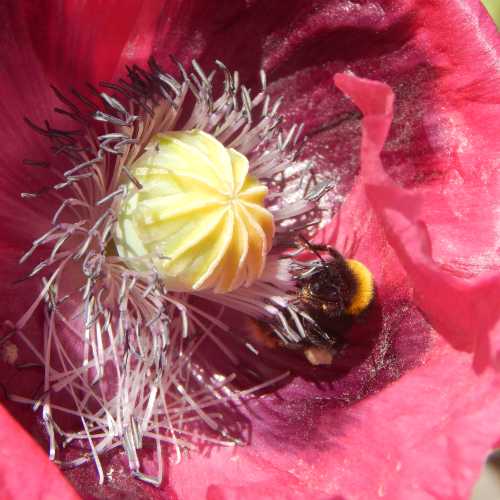Fennel
Not only are the bulbs and leaves edible, fennel pollen can be harvested from fennel flowers, which can easily be grown in the garden.
Bees and some other pollinating insect species like fennel too - so every one wins, because not only is fennel wonderful for bees, it is obviously an excellent, all-round culinary herb.
It has to be said, I am a big fan of herbs anyway! Many herb plants are enjoyed by bees, and they also make wonderful gifts! Bees win - everyone wins!
Pollen and Nectar For Bees And A Culinary Treasure Too!
Fennel has a lovely, aniseed flavour. The leaves can be used as a
garnish, and as well as the edible bulb, the seeds can be eaten too. Even the
pollen can also be enjoyed in food, and has a sweet, intense aniseed
flavour.
In Italy – especially in the region of Tuscany, fennel
pollen is sometimes used as a flavouring in bread and pesto.
Fennel pollen can also be used in salads and on roasted meats and fish.
Fennel pollen is expensive to purchase as a cooking ingredient, so why not grow some fennel for yourself, and for the bees?
How To Grow Fennel
This herb prefers a warm, dry climate, and soil should not be too acidic, although it can survive in a range of climates.
Prepare the soil in advance (– preferably the autumn before sowing the seeds) by digging in plenty of organic matter. Sow seeds April to June in prepared soil about 2” deep, and in rows about 20” – 30” apart.
Fennel
is a perennial plant, and will require a reasonable amount of space and
a permanent position. It also grows quite tall.
For
earlier crops you can sow the seeds into pots and keep them in the
greenhouse to keep warm. This can be done February/March. Once the
plants are established, harden them off outside by covering them with
protective cloches.
You can also sow the seeds in the autumn, however, again you will need to overwinter the plants in the greenhouse.
Prevent stems around the roots from turning white by earthing-up, in the same way you do for potatoes.
Collecting Fennel Seeds
This is where everyone is a winner. Allow the fennel flowers to complete their cycle. The bees will enjoy the flowers, and will pollinate the plants to ensure a good crop of seeds, which can be eaten, sown to create new plants next year, and can also be stored.
The seeds can be eaten whilst green and juicy, or you can collect them whilst fully dried.
How To Collect Fennel Pollen
If you have plenty of flowers and seeds, you might like to collect a little fennel pollen to try for yourself.
Cut a few flower stalks, place them in a paper bag with flowers facing downwards and stems poking out of the bag. Tie the bag and stems together, and hang then in a dry place. As the flowers dry, the pollen will drop off into the bag.
For fresh fennel pollen, simply pick flowers, and shake them gently into a dish directly prior to use in cooking. You only need a little.
Medicinal Uses Of Fennel
Although
you may be keen to sample the pollen, seeds are a good way to store the
benefits of this herb, and it is believed that there are a number of
medicinal effects of fennel, as well as culinary uses.
Fennel
tea can be made from bruised fennel seeds, and has been used as a
carminative since ancient times, and is said to reduce bloating caused
by digestive disorders.
Fennel was believed by the ancient Romans to improve the sight, and has also been used to treat coughs.
Some
writings suggest that fennel is disliked by fleas, and therefore,
powdered fennel may be used in kennels and stables as a natural means of
deterring fleas.
Growing Your Own Organic Fennel
If
you would like to grow your own fennel to help the bees, eat the seeds
and perhaps collect a little pollen I recommend you go organic, and that
means starting with organic seeds.
Buying organic fennel seeds will ensure the seeds have not been treated with chemicals. Ideally, purchase heirloom or heritage seeds if you can, to grow open pollinated plants – these ensure your plants really will benefit bees and other pollinators.
If you found this page helpful or interesting, I'd really be grateful if you would share it with others - if not this page, perhaps another, such as Gardening For Bees.
Thank you so much :) .

